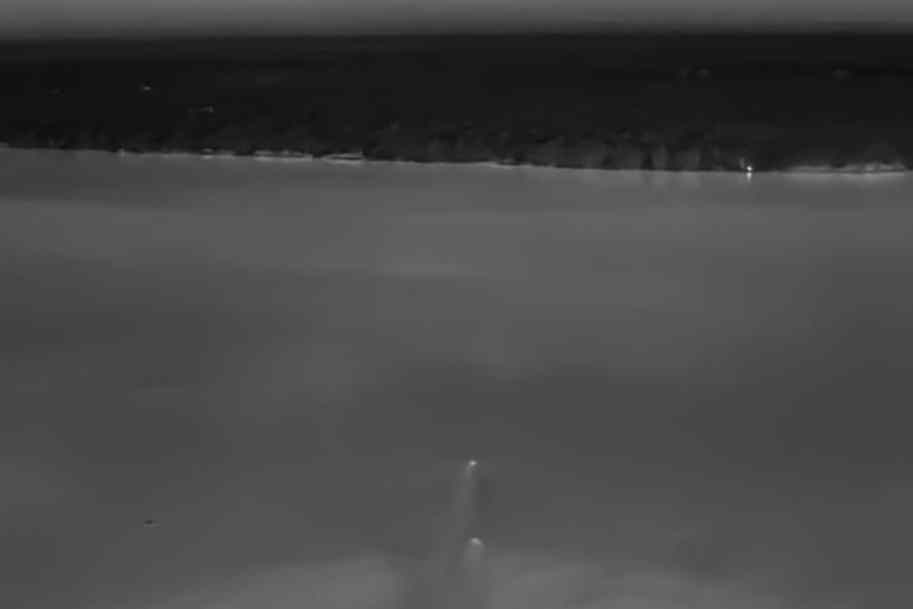Young Lochinvar, the gallant lover-warrior of Sir Walter Scott’s poem, did not have to contend with river monsters when he jumped into the Eske on his way to rescue his fair Ellen.
Our two heroes faced a stiffer test.
Wildlife scientists have observed a pair of lion siblings in Africa swim nearly 1.5km across a channel infested with crocodiles and hippos — the longest documented swim by any lion — possibly in search of lionesses.
The international research team used a drone with a heat-detection camera to capture the night-time swim by Jacob, a three-legged lion, and his brother Tibu across the Kazinga waterway between the George and Edward lakes in Uganda on February 1.
The pair initially made three unsuccessful attempts — each time returning to shore after entering the water — probably because they were chased by a crocodile or a hippopotamus.
They crossed in the fourth attempt, swimming a straight-line distance of 1.1km but possibly nearly 1.5km, given direction changes during the swim, the scientists said in a study published on Wednesday in the journal Ecology and Evolution.
Alexander Braczkowski, a conservation biologist at Griffith University in Australia and the study’s first author, described Jacob as Africa’s most resilient lion.

The heat signatures of the two male African lions swimming towards the Katunguru peninsula of Queen Elizabeth National Park on February 1. Image: Luke Ochse
“Jacob has had the most incredible journey and really is a cat with nine lives,” he said in a media release from Griffith University.
Jacob, he said, had been gored by a buffalo, his family was poisoned by the lion body parts trade, he was caught in a poacher’s snare, and lost his leg through amputation after another attempted poaching during which he was caught in a steel trap.
“The long-distance swim shows us the extraordinary lengths animals are taking in increasingly human-dominated landscapes,” Braczkowski told The Telegraph via email.
“The fact that we see a three-legged lion searching for females in a declining population shows us this (ecosystem) is in distress.”
The scientists speculate that three factors may have driven the lions to make the perilous, long-distance swim.
One, the absence of lionesses in their local ecosystem; two, defeat in a fight over territory with other lions; three, the desire to avoid the only land connection to the other side, a small road bridge with armed guards.
Although big cats are known to be good swimmers, all previous documented swims by lions had ranged from 10m to under 300m. A male puma had swum 1.1km in northeastern US in 2022.
The scientists have cited earlier video evidence of tigers crossing the Brahmaputra in northeastern India and large channels in the Sunderbans.
Early this summer, an Indian tiger looking for a mate had undertaken a 1,100km odyssey across four states, skirting human settlements and Maoist mines, evading poachers and taking in its stride the swelter and forest fires. It’s not clear whether it crossed any rivers or streams in its journey from Madhya Pradesh to Odisha via Chhattisgarh and Jharkhand. In the hours before their long-distance swim, the African lion brothers had just lost a fight with other male lions, Braczkowski said.
“Competition for lionesses in the park is fierce and they lost a fight for female affection in the hours leading up to the swim,” he said. “It is likely the pair mounted the risky journey to get to females on the other side of the channel.”

Jacob, a lion who lost a limb in a poacher’s trap in 2020, and Tibu, his brother, completed a swim across the Kazinga Channel in Uganda in February. Picture credit: Alex Braczkowski
Braczkowski and his colleagues from Uganda, China, South Africa, the UK and the US have been engaged in a long-term study of African lions and other predators in several Ugandan national parks.
Their study has revealed that, contrary to previous beliefs, the lion population in the park is under severe threat, “characterised by low population density, a male-biased sex ratio, and increased lion movements”, said Arjun Gopalaswamy, a statistical ecologist in Bangalore who had earlier supervised research on lions in Uganda. The long-distance swim expands our understanding of lion behaviour, said Ravi Chellam, a large cat specialist and coordinator of the Biological Collaborative, a network of conservation researchers.
“Placing this behaviour in an ecological context and exploring conservation implications adds value to our thinking and imagination related to conservation planning for large cats in general and lions in particular,” Chellam said.











